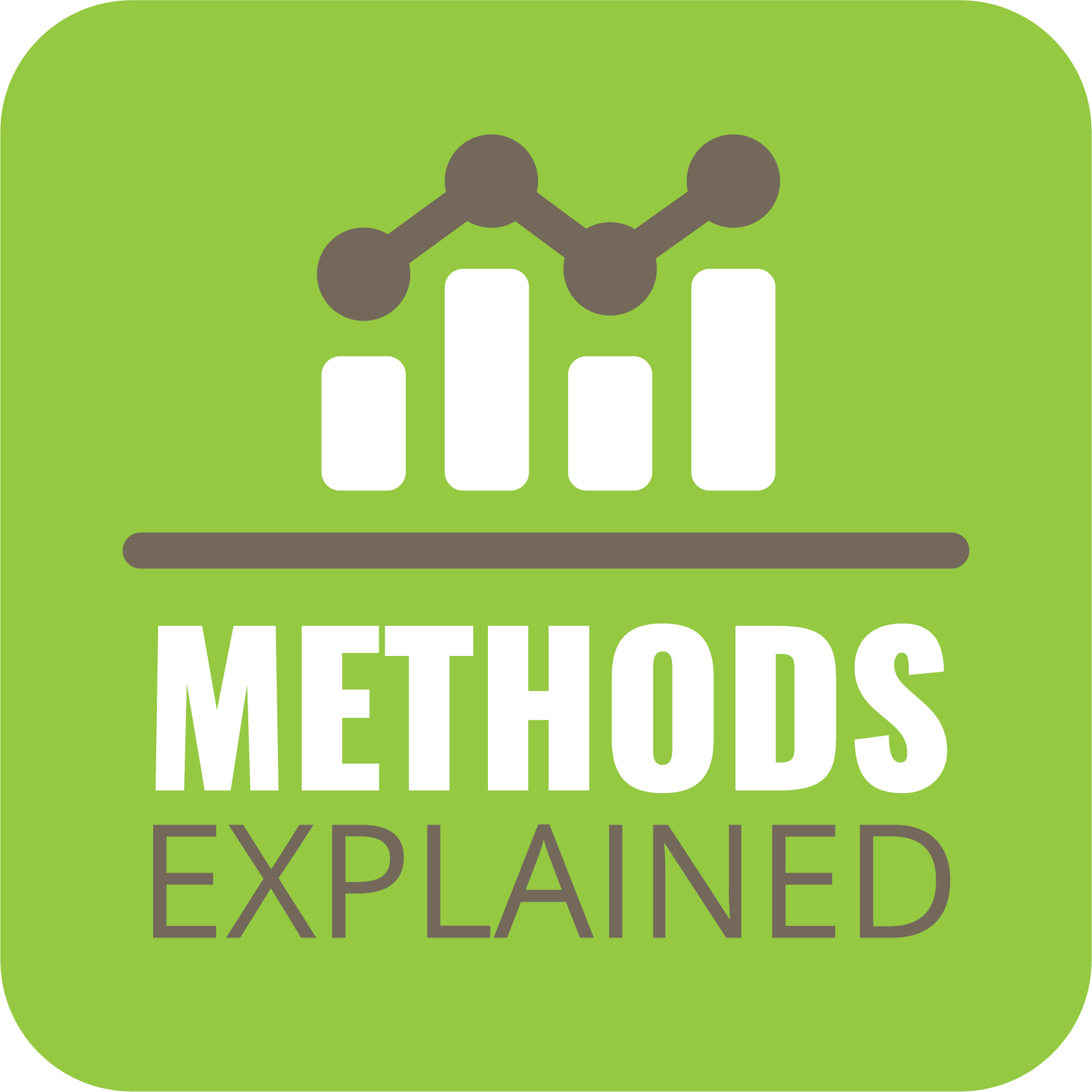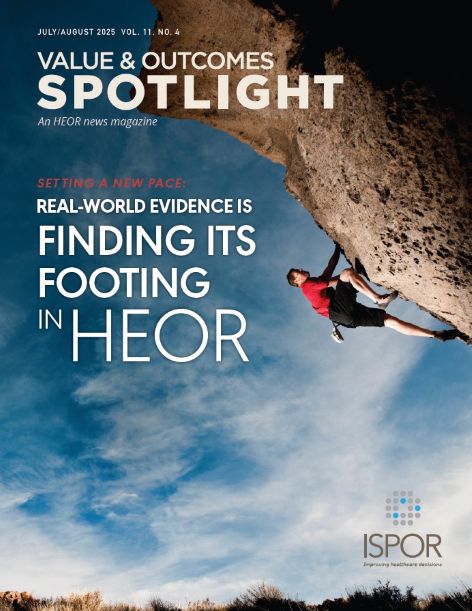Target Trial Emulation
Section Editor: Koen Degeling, PhD
 Fitting
nicely with the theme of this issue of Value & Outcomes Spotlight,
we are covering target trial emulation (TTE) in this edition of Methods
Explained based on a conversation with Miguel Hernan and Seamus Kent. Miguel
Hernan, MD, is the Director of CAUSALab and Professor of Biostatistics and
Epidemiology at the Harvard T.H. Chan School of Public Health, and a driving
force in the adoption of TTE within the field of health economics and outcomes
research. Seamus Kent, PhD, is Assistant Professor at the Erasmus School of
Health Policy & Management and a well-known expert on the use of real-world
evidence for health technology assessment, as demonstrated by his leadership on
the real-world evidence framework that was published by the National Institute
of Health and Care Excellence (NICE) in 2022.
Fitting
nicely with the theme of this issue of Value & Outcomes Spotlight,
we are covering target trial emulation (TTE) in this edition of Methods
Explained based on a conversation with Miguel Hernan and Seamus Kent. Miguel
Hernan, MD, is the Director of CAUSALab and Professor of Biostatistics and
Epidemiology at the Harvard T.H. Chan School of Public Health, and a driving
force in the adoption of TTE within the field of health economics and outcomes
research. Seamus Kent, PhD, is Assistant Professor at the Erasmus School of
Health Policy & Management and a well-known expert on the use of real-world
evidence for health technology assessment, as demonstrated by his leadership on
the real-world evidence framework that was published by the National Institute
of Health and Care Excellence (NICE) in 2022.
We welcome your feedback on this article and any suggestions for methods to be covered in future editions. Send your comments and suggestions to the Value & Outcomes Spotlight Editorial Office.
What is target trial emulation (TTE)?
Although the title of this section may suggest otherwise, TTE should be considered a framework rather than a method. It is a general approach to articulate causal questions and guide the use of observational data to answer them.
Estimating causal effects, such as the effectiveness of healthcare interventions, can be done through randomized controlled trials. If such trials are performed properly, unbiased estimates of the intention-to-treat effect can be obtained. In cases where there is no randomized study, observational data can be used. This could be data from a nonrandomized study or from real-world data. When estimating causal effects using data from an observational study, researchers are emulating (whether implicitly or explicitly) a randomized trial that they would ideally have performed (ie, the target trial). The TTE framework provides a structured approach towards defining the causal question, target trial and data analysis, helping to eliminate biases that can arise from decisions made in the design of the research.
Causal effect estimates from observational data are prone to biases and controlling aspects that may bias the estimate is essential to analyzing such data. The TTE framework makes this bias control explicit through connecting the target trial and the analysis performed. This transparency helps to focus the discussion regarding the interpretation of results from observational studies on the quality of the data rather than the use of the data.
The TTE framework is useful for causal inference from observational data if the interventions are well-defined and it is feasible to map the components of the target trial protocol to the data that are available or will be collected.
Conceptually, how does it work?
Emulating a trial comes down to transparently writing down the research question and how it will be answered. The target trial is made explicit by articulating the randomized trial that would answer the research question according to a structured framework.
As with most research, the starting point is a research question that is relevant to decision makers and can be answered with the available data or data that can be gathered. Subsequently, the target trial is specified by defining the causal estimand, identifying assumptions, and estimator. Defining the causal estimand concerns the design of the target trial, including the eligibility criteria, interventions, outcomes, and follow-up period. The identifying assumptions concern the assumptions underlying the study, such as those regarding the loss to follow-up. The estimator covers the data analysis and any modeling assumptions. Once the design of the target trial has been established, the data analysis methodology often follows naturally, based on the boundaries of the data.
Once the target trial has been defined, the emulation is performed by describing and performing the mapping of the trial elements to the observational data, and capturing any additional assumptions made in doing so.
"The TTE framework provides a structured approach towards defining the causal question, target trial and data analysis, helping to eliminate biases that can arise from decisions made in the design of the research."
Are there alternatives to the TTE framework?
One may expect that data analysis methods commonly applied to observational data are alternatives to TTE. These may include techniques like propensity score matching, instrumental variable estimation, etc. However, the TTE framework is not a method to analyze data, the data analysis methods are subsumed as a component of the emulation.
Therefore, there are no alternative approaches to TTE, per se. Any attempt to answer a causal question using observational data is an attempt to emulate a target trial. The question is whether the target trial is made explicit or kept implicit. When things are kept implicit, reviewers of the study have to reverse-engineer the target trial, which often is challenging and can lead to misinterpretation. When making things explicit through the TTE framework, researchers not only can avoid fundamental mistakes that may result in erroneous conclusions but also facilitate reviewers in effectively and efficiently appraising their work.
To what extent is it currently being used?
The TTE framework has been incorporated as best practice in several health technology assessment (HTA) guidelines, including in those of the European HTA, NICE in England, Haute Autorité de santé in France, Agency of Health Quality and Assessment in Catalonia, Spain, and the Canadian Drug Agency. The Cochrane Collaboration uses the target trial framework for its Risk of Bias in Non-randomized studies (ROBINS) tool. The FDA’s Sentinel group has incorporated the target trial framework into its PRINCIPLED approach for causal inference from observational data.
Even though it is recommended by guidelines, TTE is not yet common practice. The HTA and regulatory agencies themselves will have to build their internal capacity and expertise to be able to review the information provided. Furthermore, the acceptance of observational data is still often hampered by issues regarding confounding and data quality, such as missing data or alternative definitions of outcomes. The TTE framework does not change this—it makes these challenges (even more) explicit.
The number of applications may increase in the years to come as HTA bodies such as NICE increasingly request information is provided according to the TTE framework. Positive experiences through better informed conversations on confounding based on transparent reporting of study design and results may contribute further to its uptake. These benefits will become more evident once there are more reevaluations of reimbursement based on real-world data.
"Any attempt to answer a causal question using observational data is an attempt to emulate a target trial. The question is whether the target trial is made explicit or kept implicit."
What are remaining challenges for the adoption of TTE?
TTE helps researchers and reviewers to understand what risks and trade-offs are in designing observational studies. However, many researchers and decision makers may be looking for additional guidance on how to make such trade-offs based on their impact or importance. Although the intent of the TTE framework has never been to provide this guidance, a potential mismatch regarding expectations of the scope of the framework may hamper its adoption.
Although the use of the term target trial emulation is increasing, practice is not necessarily changing at the same pace. This suggests there may be some misuse of the term, whereas the framework should not just be a reporting checklist, but practice changing. People need to learn to ask the right questions early in the study design phase. It will be a gradual process from understanding what needs to be reported to using the framework to inform the design of studies. Our field, which is generally experienced in setting up and reporting clinical trials, is still learning and further training will be important. Aligning TTE with the setup and reporting of clinical trials could therefore help in bringing the framework to a broader audience. There are ongoing efforts to establish reporting guidelines for TTE.
Further reading
Professor Hernan and colleagues have written several papers that informed this Methods Explained article and provide a great starting point for further reading on the TTE framework.1,2 These include references to applied examples. Another impactful study for which the TTE framework was utilized concerns the estimation of the effectiveness of a third dose of a COVID-19 vaccine, findings of which were later confirmed by prospective randomized trials.3
References
- Hernán MA, Wang W, Leaf DE. Target trial emulation: a framework for causal inference from observational data. JAMA. 2022;328(24):2446-2447. doi: 10.1001/jama.2022.21383. PMID: 36508210.
- Hernán MA, Dahabreh IJ, Dickerman BA, Swanson SA. The target trial framework for causal inference from observational data: why and when is it helpful? Ann Intern Med. 2025;178(3):402-407. doi: 10.7326/ANNALS-24-01871. Epub 2025 Feb 18. PMID: 39961105; PMCID: PMC11936718.
- Barda N, Dagan N, Cohen C, et al. Effectiveness of a third dose of the BNT162b2 mRNA COVID-19 vaccine for preventing severe outcomes in Israel: an observational study. Lancet. 2021;398(10316):2093-2100. doi: 10.1016/S0140-6736(21)02249-2. Epub 2021 Oct 29. PMID: 34756184; PMCID: PMC8555967.

